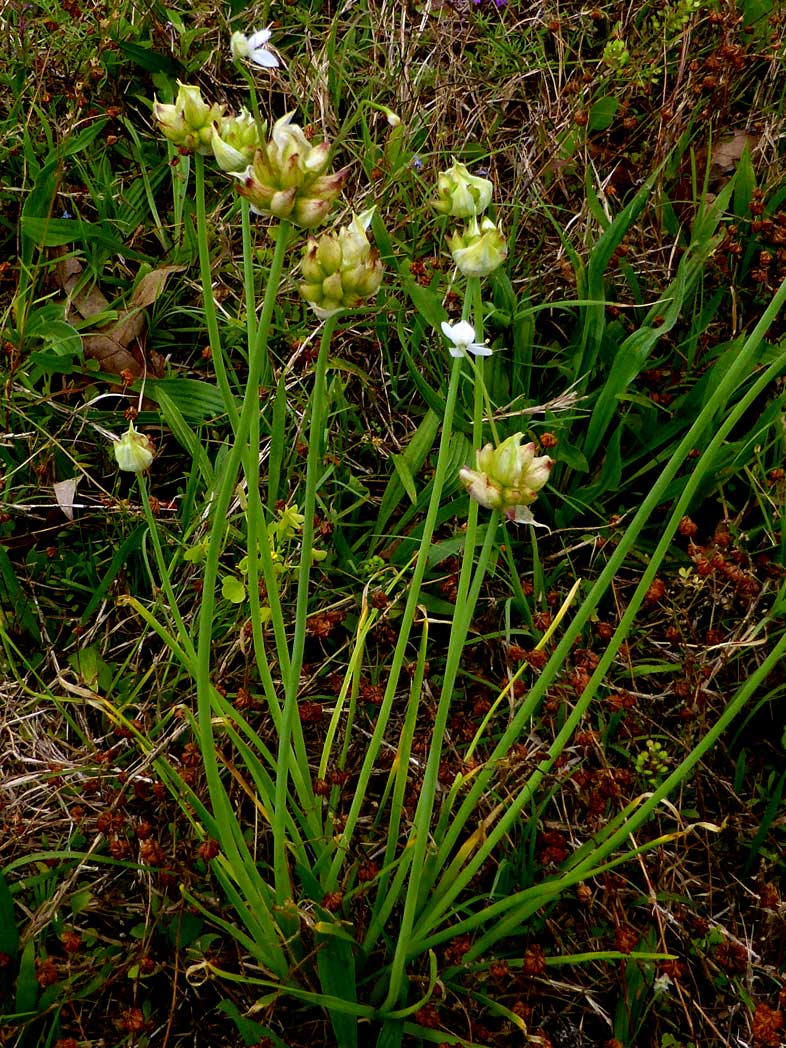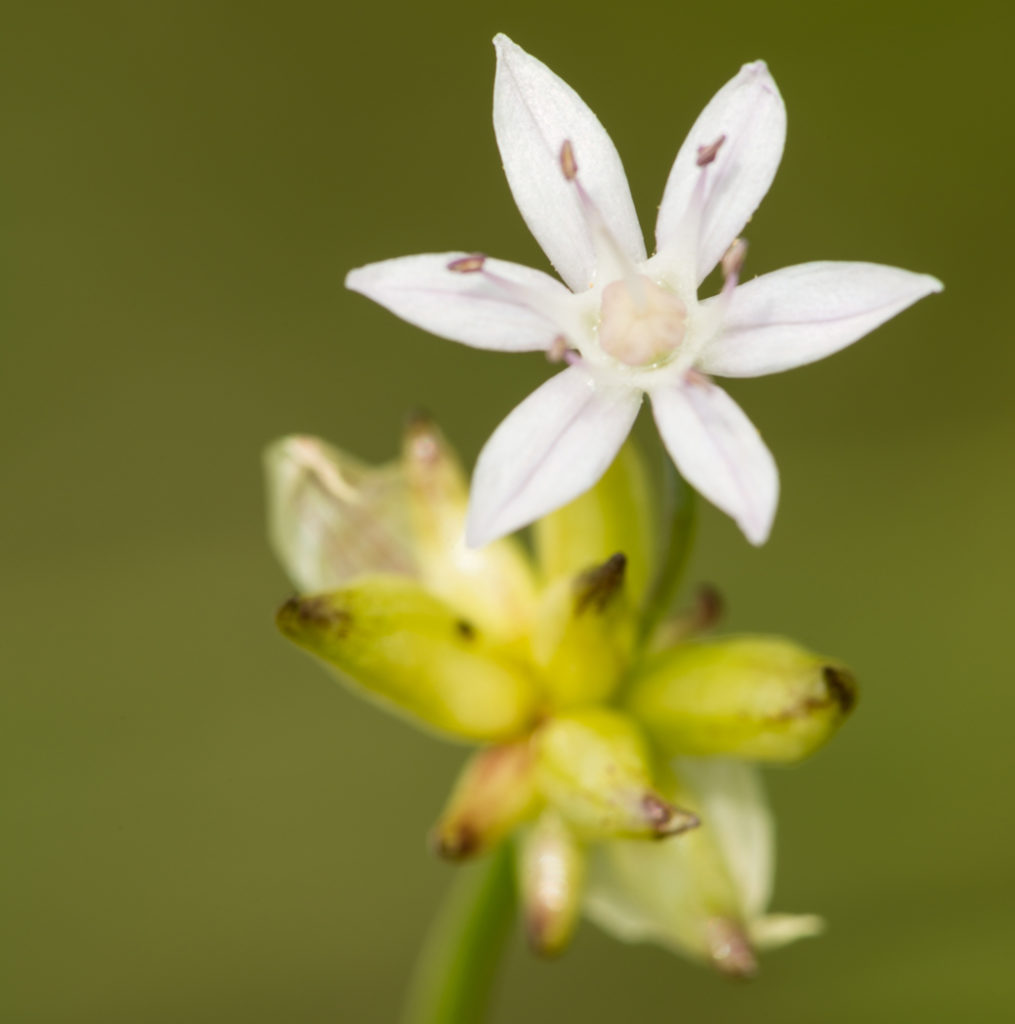Wild garlic
Wild garlic (Allium canadense var. canadense) by Keith Bradley. Click on terms for botanical definitions. View post as a PDF
Wild garlic is a grasslike perennial with lovely clusters of flowers. It blooms primarily in late winter and spring and attracts many insects, including moths and native bees; honeybees tend to dislike it. Wild garlic has a strong, tell-tale smell of garlic or onion. All parts of the plant are edible and may be prepared the same as garlic or onions. Bulbs may be eaten raw, sautéed, pickled or roasted. Use the young leaves as you would chives.
Wild garlic’s star-shaped flowers have six erect or spreading white to pinkish tepals. They are pedicellate and wrapped in a papery bract. The inflorescence is a terminal umbel consisting of flowers and/or bulblets (typically more bulblets than flowers). Umbels are born atop long scapes. Basal leaves are long, linear and sheathed. Leaf blades are smooth and flat with parallel venation. Margins are entire. The plant arises from a fleshy underground bulb covered brown papery skin.
Wild garlic is known by many common names, including Meadow garlic, Wild onion, Canadian garlic and Canada onion. The genus name Allium is from the Latin for “garlic.” It is formerly a member of the Amaryllidaceae, Liliaceae and Alliaceae families. Current taxonomy treats Alliaceae as Alloideae, a subfamily of Amaryllidaceae. Some botanists still accept Alliaceae as its own family and place the genus Allium within it.
Two varieties of Allium canadense are native to Florida: A. canadense var. canadense and A. canadense var. mobilense. While similar in appearance, the latter produces only flowers and no bulblets. The former is more the common variety.

Wild garlic’s grasslike leaves. Photo by Eleanor Dietrich
Members of the Allium genus are high in iron, calcium, folate, phosphorus, choline, magnesium, potassium, vitamins A and C. They have been used to treat many medical conditions, including high/low blood pressure, high cholesterol, heart disease, atherosclerosis, enlarged prostate, cystic fibrosis, diabetes, osteoarthritis, hay fever, traveler’s diarrhea, yeast infection, flu, common cold, bacterial/fungal infections, earaches, chronic fatigue syndrome, menstrual disorders, hepatitis, fever, coughs, headache, stomachache, sinus congestion, gout, joint pain, hemorrhoids, asthma, bronchitis, shortness of breath, low blood sugar, inflammation, and to help eliminate parasites.*
Family: Amaryllidaceae (Amaryllis or daffodil family)
Native range: Panhandle, north and central peninsula
To see where natural populations of Wild garlic have been vouchered, visit florida.plantatlas.usf.edu.
Lifespan: Perennial
Hardiness: Zones 8A–9B
Soil: Moderately dry to moderately moist, sandy, clay or loamy soils
Exposure: Full sun to partial shade
Growth habit: ±1’ tall
Propagation: Seed; division or transplanting of bulbs/bulblets
Garden tips: Use Wild garlic as an accent plant in wildflower or herb gardens. It generally dies back in the summer and fall, especially in the southern end of its range. New plants may emerge from each bulblet. Remove bulblets to prevent the plant from spreading.
Caution: There are several look-alike species available in big box garden centers. Some may be toxic. If it looks like onion or garlic but does not have their smell, it is most likely inedible and toxic.
Plants are generally available from nurseries that specialize in Florida native plants. Visit www.PlantRealFlorida.org to find a nursery in your area.
*References to medicinal properties are not intended to diagnose, treat, cure or prevent any disease.

